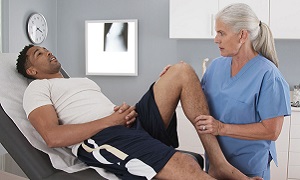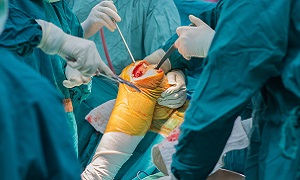Torn Meniscus
Torn meniscus is a common knee injury, which can be caused by any activity that can cause you to twist or rotate your knee forcefully, especially when you put full weight on it.
Sometimes treatment such as rest, ice, and medication, is enough to relieve the pain of a torn meniscus and give the injury time for self-healing. However, in some cases, surgical repair might be required in cases of a torn meniscus.
Symptoms
In some cases, meniscal tears might not cause any symptoms or problems. However, like any injury, there is an inflammatory response, which can include pain and swelling. The swelling within the knee joint from a torn meniscus generally takes a few hours to develop and depending upon the amount of pain, and fluid accumulation, sometimes it becomes difficult to move the knee. When fluid accumulates within the enclosed area of your knee joint, fully extending or straightening the knee also becomes quite painful and difficult.
In certain situations, the amount of swelling is not enough for you or anyone to notice. Sometimes you might not be aware of the initial injury, but you might start noting symptoms that develop later. There may or may not be an acute injury. The knee cartilage might become damaged due to a consequence of aging, arthritis, and wearing away of the meniscus causing a degenerative meniscal tear.
The knee joint irritation might settle down gradually, after an injury, and feel relatively normal as the initial inflammatory response resolves. Still, there is a likeliness that other symptoms might also develop over time, which might include any or all of the following:
- Pain with walking or running too long
- Intermittent swelling of the knee joint might also occur. Multiple times, the knee with a torn meniscus can feel “tight.”
- Popping, especially when one is climbing up or downstairs
- You might also experience a mechanical block where the knee cannot be fully extended or straightened. This occurs when a piece of torn meniscus folds on itself, thus blocking the full range of motion of your knee joint. Therefore, your knee can get stuck, and unable to bend or straighten from a position.
- You may experience the sensation that the knee is unstable and the feeling that the knee will give way.
Causes & risk factors
Any activity that can cause you to twist or rotate your knee forcefully, can result in a torn meniscus. Aggressive pivoting, kneeling, sudden stops and turns, deep squatting, or lifting something heavy might cause a torn meniscus.
In older people, degenerative changes in the knee can also lead to a torn meniscus but cause little or no trauma.
The risk of having a torn meniscus is high among athletes, particularly those who take part in contact sports, like football, tennis, or basketball.
As you age, it leads to the wear and tears on your knees increasing. Obesity does the same.
Diagnosis
Generally, a torn meniscus is identified during a physical exam. Your doctor may move your knee and leg into different positions, after which he/she will be watching you walk and may also ask you to squat in order to help pinpoint the cause of your signs and symptoms.
He/she might also require tests such as:
X-rays
Since a torn meniscus is made of cartilage, it will not show up on any X-rays. However, X-rays can help in ruling out other problems with the knee that can cause similar kinds of symptoms.
MRI
This technique uses radio waves as well as a strong magnetic field for producing detailed images of both hard and soft tissues, within the knee. It is the best imaging study for detecting a torn meniscus.
Arthroscopy
Sometimes, your doctor might also use an instrument which is known as an arthroscope, which can be inserted through a tiny incision in your knee.
This device has a light and a small camera, which can transmit an enlarged image of the insides of your knee onto a monitor. Surgical instruments can also be inserted through it, if necessary, or through additional small incisions in your knee for repairing the tear.
Treatment
Therapy

Surgery
Your doctor might be recommending surgery, if your knee remains painful despite any rehabilitative therapy, or if the knee locks. It is sometimes possible to repair a torn meniscus as well, especially in children as well as young adults.
If your tear is not repairable, your doctor might choose to trim the meniscus surgically, possibly through tiny incisions using an arthroscope. After the surgery, you will need to do a few exercises in order to increase and maintain the strength and stability of your knee.
If you are suffering from advanced, degenerative arthritis, your doctor might be recommending a knee replacement.

